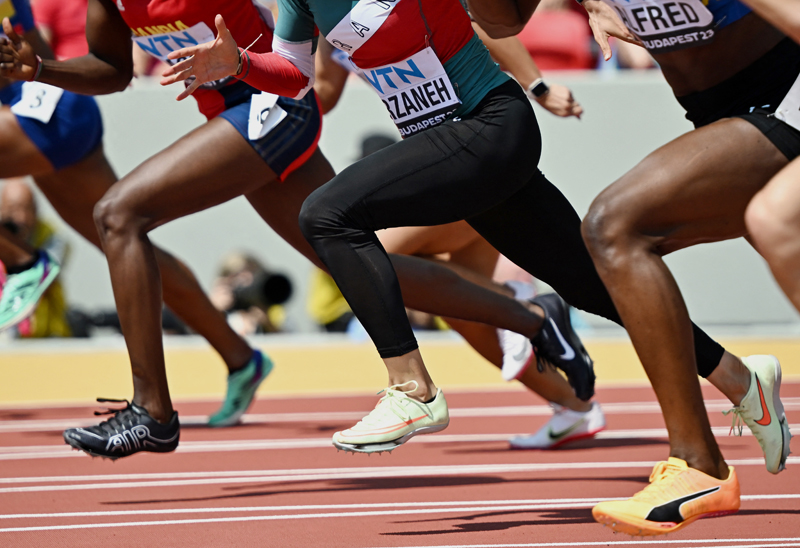You are viewing 1 of your 1 free articles. For unlimited access take a risk-free trial
Combining strength and endurance training - the pros and cons
The people in the strength and endurance groups trained three days a week while those doing concurrent training worked out six days a week for 12 weeks. The controls were asked to refrain from beginning any formal exercise training programme for the duration of the study. A 12-week duration was chosen for training as previous research had shown that a compromise in strength development appears between seven and 12 weeks of concurrent training. A range of physiological tests were carried out before training started and after six and 12 weeks.
* VO2 max increased significantly and by similar amounts in the groups doing endurance and concurrent training but, predictably, not in the other two groups;
* The men and women doing strength and concurrent training showed significant increases in bilateral leg press and unilateral knee extension 1 RM following six and 12 weeks of training, but the strength group had significantly higher unilateral knee extension 1 RM than all the other groups after 12 weeks. Those doing endurance training only experienced no change in unilateral knee extension but showed a significant increase in bilateral incline leg press after six weeks only;
* Those in the strength group showed a significant increase in the areas of type 1 (slow twitch) and type 11 (fast twitch) muscle fibres after six and 12 weeks, while those doing concurrent training showed a significant increase in the areas of type 11 after 12 weeks;
* Those in the concurrent training group showed a significant increase in muscle blood supply after 12 weeks in comparison with the controls;
* Urinary concentration of the hormone cortisol was significantly decreased in the men of the endurance group after 12 weeks of training and significantly increased after six and 12 weeks of training in the women doing concurrent training. These women had significantly higher concentrations of urinary cortisol than all the other groups after 12 weeks, suggesting an elevated catabolic state (in which the body's nutrient stores are broken down rather than built up). These results suggest that concurrent strength and endurance training results in several adaptations that are different from those caused by either strength or endurance training alone. Overall, concurrent training seems to compromise adaptations to strength gains, leaving endurance gains unaffected.
The researchers conclude: 'Individuals that require the development of both strength and endurance for athletic, occupational or rehab-ilitation purposes can be assured that short-term (eg less than 7-10 weeks) concurrent training will promote increases in many aspects of strength and endurance. However, longer term training may lead to an elevated catabolic state, decreased skeletal muscle hypertrophyand impaired strength gains in some movement patterns. Conversely, concurrent endurance and strength training may promote increases in some aspects of capillarisation that are greater than endurance training alone over the same period.'
Isabel Walker
Eur J Appl Physiol (2000) 81:418-27
Newsletter Sign Up
Testimonials
Dr. Alexandra Fandetti-Robin, Back & Body Chiropractic
Elspeth Cowell MSCh DpodM SRCh HCPC reg
William Hunter, Nuffield Health
Newsletter Sign Up
Coaches Testimonials
Dr. Alexandra Fandetti-Robin, Back & Body Chiropractic
Elspeth Cowell MSCh DpodM SRCh HCPC reg
William Hunter, Nuffield Health
Keep up with latest sports science research and apply it to maximize performance
Today you have the chance to join a group of athletes, and sports coaches/trainers who all have something special in common...
They use the latest research to improve performance for themselves and their clients - both athletes and sports teams - with help from global specialists in the fields of sports science, sports medicine and sports psychology.
They do this by reading Sports Performance Bulletin, an easy-to-digest but serious-minded journal dedicated to high performance sports. SPB offers a wealth of information and insight into the latest research, in an easily-accessible and understood format, along with a wealth of practical recommendations.
*includes 3 coaching manuals
Get Inspired
All the latest techniques and approaches
Sports Performance Bulletin helps dedicated endurance athletes improve their performance. Sense-checking the latest sports science research, and sourcing evidence and case studies to support findings, Sports Performance Bulletin turns proven insights into easily digestible practical advice. Supporting athletes, coaches and professionals who wish to ensure their guidance and programmes are kept right up to date and based on credible science.









